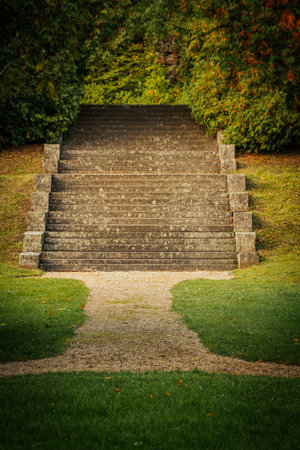Introduction to Castle and Estate Walks
Britain’s storied landscape is adorned with an impressive array of castles and grand estates, each echoing centuries of history, culture, and architectural prowess. These remarkable sites have witnessed the unfolding of royal dramas, military campaigns, and the evolution of British society. Today, they serve not only as enduring symbols of the nation’s heritage but also as captivating destinations for families seeking to blend education with outdoor adventure. Exploring these castles and estates via well-marked walking routes offers a unique opportunity for families to immerse themselves in history while enjoying the scenic beauty of the British countryside. From mighty Norman fortresses perched atop windswept hills to stately homes nestled within manicured parklands, these walks provide accessible pathways into Britain’s past, encouraging children and adults alike to discover tales of kings, queens, and everyday life across the ages. For many families, walking these historic grounds together fosters a deeper appreciation for local heritage and creates lasting memories through shared exploration.
2. Selecting Family-Friendly Routes
When planning a day out exploring British castles and estates, selecting the right walking route is crucial for ensuring an enjoyable and safe experience for families and multi-generational groups. The diverse landscapes of British estates—ranging from manicured gardens to rolling parklands and ancient woodlands—require thoughtful consideration to match the abilities and interests of all participants, especially young children and older adults.
Key Considerations for Route Selection
- Safety: Prioritise well-maintained paths with clear signage. Avoid routes with steep drops, slippery surfaces, or areas prone to flooding, particularly after rain.
- Accessibility: Choose routes with gentle gradients and firm surfaces suitable for prams and mobility aids. Estates often indicate accessible trails on their maps or websites.
- Engagement: Look for walks that offer points of interest such as wildlife viewing hides, historical ruins, lakes, or play areas to keep children engaged throughout the journey.
Comparing Walking Path Features
| Route Type | Terrain | Estimated Duration | Suitable For |
|---|---|---|---|
| Garden Circuit | Paved/Gravelled, Level | 30-45 mins | Toddlers, Prams, Elderly |
| Woodland Trail | Uneven, Natural Paths | 1-2 hours | Youth, Active Families |
| Lakeside Walk | Mainly Flat, Some Grass | 1 hour | All Ages (with supervision) |
Practical Tips for Families
- Check estate websites for downloadable maps and route difficulty ratings before your visit.
- Packing essentials: bring weather-appropriate clothing, water bottles, snacks, and a basic first aid kit.
- If in doubt about a path’s suitability, consult estate staff; many sites have rangers or volunteers who can offer tailored advice.
Selecting a thoughtful route not only maximises enjoyment but also fosters a spirit of adventure across generations as you discover the unique heritage and natural beauty of Britain’s historic properties together.

3. Immersive History and Storytelling
One of the most captivating aspects of exploring British castles and estates through family walking routes is the opportunity to immerse everyone in the rich tapestry of local history. To make these outings more than just scenic strolls, consider weaving historical anecdotes, local legends, and interactive activities into your journey. Engaging children and adults alike with tales of valiant knights, mischievous ghosts, or infamous sieges can transform a simple walk into a memorable adventure.
Incorporating Local Lore
Before your visit, research the unique myths and stories associated with your chosen castle or estate. Many locations have their own famous ghost stories or legendary events that have been passed down for generations. As you walk, pause at significant points—perhaps a crumbling tower or ancient woodland—to share these tales with your group. This not only enriches the experience but also encourages curiosity about Britain’s diverse heritage.
Sharing Historical Anecdotes
Bring history alive by recounting fascinating facts about former residents, battles fought on the grounds, or how certain architectural features were used in medieval times. For example, discuss how arrow slits protected defenders during sieges or how grand banqueting halls hosted royalty. These small insights help every family member visualise life centuries ago.
Interactive Activities for Families
To further enhance learning, incorporate interactive elements such as scavenger hunts for specific architectural details or artefacts within the estate gardens. Encourage children to act out scenes from history or draw sketches of their favourite castle features. Many British heritage sites offer activity booklets or themed quizzes at visitor centres—making use of these resources ensures everyone remains engaged and eager to learn throughout your walk.
By blending storytelling with hands-on activities, families can foster a deeper appreciation for the remarkable stories behind Britain’s castles and estates, making each visit both educational and unforgettable.
4. Enjoying the British Countryside
Immersing yourself in the British countryside is an essential part of exploring castles and estates through family walking routes. The landscapes surrounding these historic sites are as varied as they are breathtaking, offering unique experiences throughout the year. Here are some practical tips to help you make the most of your rural adventures, ensuring every outing is memorable, safe, and rewarding.
Tips for Experiencing Britains Natural Beauty
- Plan According to the Season: Each season brings its own charm. Spring offers vibrant wildflowers and lively birdsong; summer boasts lush greenery and longer days; autumn features striking foliage; while winter can provide crisp air and serene views.
- Wildlife Spotting: Many estates are habitats for deer, badgers, foxes, and a host of bird species. Bring binoculars for a closer look but keep a respectful distance from animals, particularly during nesting or calving seasons.
- Choose the Best Times to Visit: Early mornings or late afternoons often provide quieter paths and the best lighting for photography. Weekdays outside school holidays tend to be less crowded.
Seasonal Highlights Across British Estates
| Season | What to See | Recommended Locations |
|---|---|---|
| Spring | Bluebell woods, lambs in pastures, migratory birds returning | Blickling Estate (Norfolk), Stourhead (Wiltshire) |
| Summer | Wildflower meadows, butterfly spotting, vibrant gardens | Chatsworth House (Derbyshire), Castle Howard (Yorkshire) |
| Autumn | Spectacular leaf colours, rutting deer, harvest festivals | Kew Gardens (London), Dunham Massey (Cheshire) |
| Winter | Misty landscapes, snowdrops emerging, frosty mornings | Bodnant Garden (Wales), Windsor Great Park (Berkshire) |
Top Recommendations for Families
- Packed Lunches: Most estates have picnic spots—pack local cheeses and seasonal fruit for a quintessentially British treat.
- Layered Clothing: British weather is famously changeable; wear layers and bring waterproofs just in case.
- Respect Nature: Stay on marked trails, follow the Countryside Code, and leave no trace of your visit.
- Accessible Routes: Check estate websites for pram-friendly or accessible paths suitable for all ages.
The Spirit of Discovery
The British countryside is more than a backdrop—it’s an integral part of the story woven into each castle and estate. By embracing the rhythms of nature and preparing thoughtfully, families can experience both the tranquillity and adventure that define Britain’s rural heritage.
5. Practical Advice for Family Walks
Preparing for the British Weather
The British climate is famously unpredictable, so it is wise to check the forecast before setting out on your family walk around castles and estates. Pack waterproof jackets and layers to stay comfortable in sudden showers or chilly winds. Don’t forget hats and sunscreen on brighter days, as British sun can be surprisingly strong, especially in open estate grounds.
Selecting Appropriate Attire
Sturdy footwear is essential, particularly when navigating uneven castle grounds or woodland trails. Walking boots or wellies are recommended for muddy paths. Children should wear comfortable clothing that allows freedom of movement. Bringing a spare set of clothes for younger children is a good idea in case of unexpected adventures—or puddles.
Refreshments and Hydration
Many castles and estates have charming tea rooms or cafés, but it’s always sensible to carry water bottles and snacks. A thermos of tea or hot chocolate can be a welcome treat on colder days. Picnics are often allowed in designated areas, providing a budget-friendly way to enjoy lunch amidst historic surroundings.
Facilities and Accessibility
Before visiting, review the estate’s website for details on toilets, baby changing facilities, and accessibility information. Some historic sites may have limited pram access or steep steps; planning ahead ensures all family members can participate comfortably. Many locations also offer maps or suggested routes tailored for families with young children.
Ensuring an Enjoyable Experience for All Ages
Choose walking routes that match your family’s abilities, keeping distances manageable for little legs and including plenty of stops to explore nature or history along the way. Engage children with activity sheets or scavenger hunts themed around local wildlife or castle legends—many estates provide these resources at visitor centres. By preparing thoughtfully, you’ll ensure your day out is both safe and memorable, allowing every member of the family to delight in Britain’s rich heritage and natural beauty.
6. Recommended Castles and Estates
To enhance your journey through Britain’s rich heritage, we have curated a selection of notable castles and estates that offer exceptional family walking routes. These destinations not only provide stunning landscapes and historical intrigue but also cater to families with thoughtful amenities and engaging experiences.
Windsor Castle, Berkshire
Family Walking Route
The Long Walk is a renowned tree-lined avenue stretching over 2.5 miles from Windsor Castle to the Copper Horse statue. The path is flat, well-maintained, and perfect for pushchairs or little feet. Children will delight in spotting deer grazing in Windsor Great Park.
Insider Tips & Amenities
Arrive early to avoid crowds. The Savill Garden nearby offers child-friendly cafés, picnic spots, and adventure play areas. Toilets and baby changing facilities are plentiful along the route.
Alnwick Castle, Northumberland
Family Walking Route
Explore the castle’s historic grounds before venturing into Hulne Park for gentle woodland trails. The park provides looped paths ranging from 1 to 3 miles, ideal for varying ages and abilities.
Insider Tips & Amenities
The Treehouse Restaurant is a must-visit for families, while the castle hosts regular children’s events themed around knights and dragons. Accessible toilets and buggy-friendly paths are available.
Bodiam Castle, East Sussex
Family Walking Route
Follow the circular trail around the moat and enjoy meadow walks along the River Rother. Interpretive boards help bring history to life for young explorers.
Insider Tips & Amenities
Bring wellies after rain, as paths can get muddy. The on-site tearoom serves local treats, while the picnic lawn is a favourite with families. Dogs on leads are welcome.
Blenheim Palace, Oxfordshire
Family Walking Route
The Lakeside Walk offers gentle terrain with panoramic views of Capability Brown’s landscaped parkland. Children love exploring the formal gardens and butterfly house.
Insider Tips & Amenities
A miniature train connects key attractions within the estate. Baby-changing facilities, child-friendly cafés, and interactive exhibitions ensure comfort and engagement for all ages.
Caerphilly Castle, South Wales
Family Walking Route
The castle’s expansive grounds feature accessible pathways circling its iconic moats. Explore the outer defences before taking a scenic riverside walk towards Caerphilly Mountain Common.
Insider Tips & Amenities
Packed lunches are recommended as seating areas abound, though local bakeries offer delicious Welsh cakes. Free parking and public toilets are available at the visitor centre.
Each of these locations embodies the charm and grandeur of British heritage while offering practical amenities tailored for families. Whether you’re seeking adventure or tranquillity, these castles and estates promise memorable days out for all generations.

